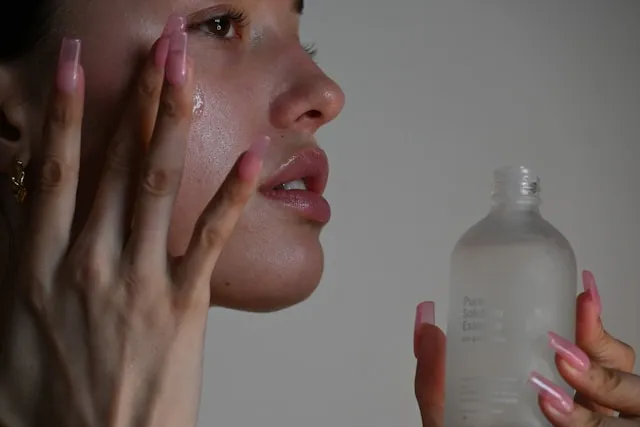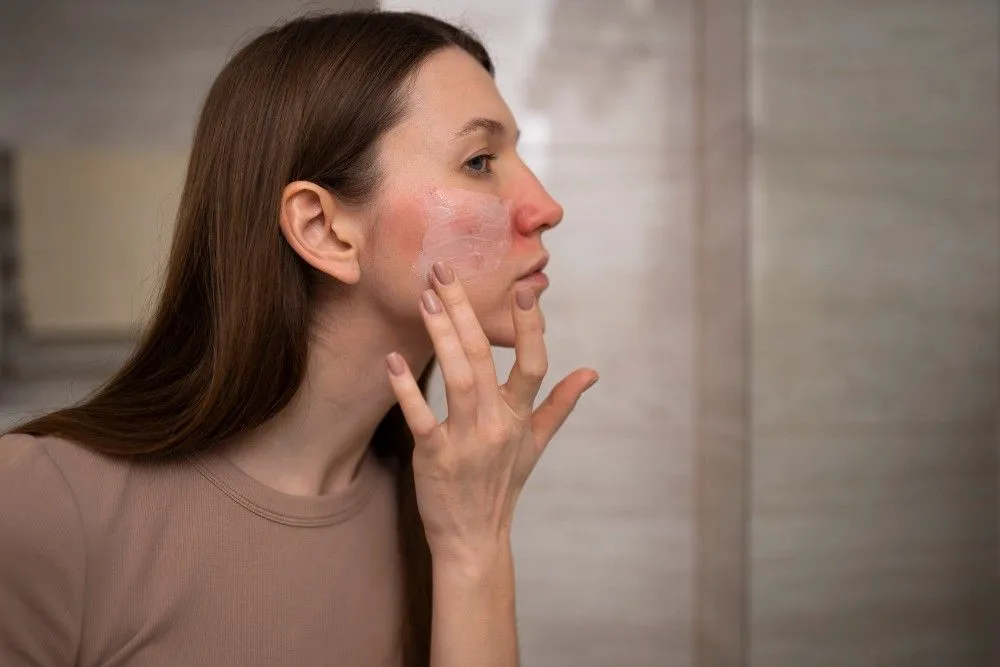Ever noticed pale or chalky patches appearing on your skin and wondered what went wrong? You’re not alone. White spots on skin can suddenly show up on your face, arms, or legs, sometimes without any warning. It can feel alarming, especially if they don’t itch, hurt, or fade. These marks may appear faint at first but tend to stand out more over time, especially against tanned or darker skin tones.
White spots might look like minor discolorations, but they often point to underlying issues, ranging from fungal infections and autoimmune reactions to vitamin deficiencies and sun damage. And though most of these white patches on skin are harmless, some may signal a need for early treatment or long-term care.
This blog will guide you through the causes of white spots on skin, explain how to treat white spots on skin, and offer real tips on keeping them from coming back. If you've been asking, “Why do I have white spots on my skin?”, you’re exactly where you need to be.
What Are Some Probable Causes of White Spots on Skin?
White spots don’t just appear out of nowhere. The body has its reasons. Some causes are external, like too much sun or a lack of hygiene. Others are internal, like autoimmune damage to melanocytes. In fact, scientists have noted that CD8⁺ T-cells and IFN‑γ signaling often destroy pigment cells, leading to those pale blotches you see.
Let’s break down the most common triggers of these mysterious spots.
1. Mycosis (Tinea Versicolor)
Fungal infections are one of the top causes of white patches skin. This happens when yeast (normally present on skin) overgrows due to heat and sweat.
Tinea versicolor symptoms include tiny white or light pink patches, usually on the upper back, neck, and chest. These patches may feel dry or itchy. Children and adults who live in humid areas or sweat a lot are more prone.
Regular antifungal creams like clotrimazole and miconazole often clear this condition. But it can take weeks to even out your skin discoloration.
2. Vitiligo
This is a long-term white spots skin condition that causes large, irregular white patches. It starts small but grows. Vitiligo happens when the immune system mistakenly attacks the melanocytes, the skin cells that make melanin. Vitiligo white patches can spread quickly or slowly and may become symmetrical.
Though it doesn’t hurt or itch, it deeply affects self-image. Treatments like MKTP (Melanocyte Keratinocyte Transplant Procedure), skin grafts, or topical corticosteroids help in restoring some color, but there’s no guaranteed cure.
3. Sun Exposure
Direct sunlight does more harm than just tanning. Overexposure to UV rays can damage melanocytes and lead to skin pigmentation loss. Small pale patches may appear on your face, shoulders, or arms. Children aged 8–12 often get these as they play outdoors without sunscreen.
The good news? These usually fade when sun exposure is reduced. But to avoid them, wear SPF 30 or higher and reapply often.
4. Vitamin Deficiency
Vitamin D plays a major role in skin health. Lack of sun and poor diet can both cause white spots on the skin. Dairy-deprived diets, especially among children and elders, often lead to light patches on cheeks or arms. These don't itch or spread much.
Taking vitamin D supplements and adding foods like milk, yogurt, and cheese can help reverse this. Don’t expect overnight change; it takes weeks.
5. Atopic Dermatitis
Atopic dermatitis causes dry, itchy skin that may crack, ooze, or scale. Once these inflamed patches heal, they may leave behind pale or white patches on the skin. It affects babies the most, but adults can get it too, especially in cold or dry weather.
Mild moisturizing creams and steroidal ointments like mometasone can soothe the flare-ups and restore skin tone with regular use.
6. Psoriasis
Unlike other causes, psoriasis results in thick, scaly white spots that may bleed when scratched. These plaques are more than just dry skin, they’re immune-triggered. They often appear on elbows, knees, scalp, and back.
Psoriasis can’t be cured, but long-term use of hydrocortisone creams and lifestyle changes (like avoiding triggers) help manage it. White patches may remain even after flare-ups go down.
7. White Freckles (Idiopathic Guttate Hypomelanosis)
These small, round, white freckles often affect people over 40, especially those with fair skin. Sun exposure causes the skin cells to age and stop making pigment in spots. These are harmless but permanent.
There’s no treatment, but regular sunscreen can prevent new ones from forming.
8. Hypomelanosis
This rare condition leaves skin in patches of visible discoloration. It’s often inherited and can be worsened by trauma or chemical exposure. The difference between dark and light skin becomes obvious in people with brown or darker skin tones.
Treatments include light therapy, mild sun exposure, or melanin-stimulating creams.
9. Tuberous Sclerosis
This genetic disorder appears as white leaf-like patches on the body, especially in kids under 6. It may come with kidney or brain issues. These white patches on the skin need urgent medical review. Treatment often involves a team of specialists.
What Are the Different Ways to Treat White Spots on the Skin?
While not every case needs medical intervention, understanding white spots on skin treatment options is vital. Here's how dermatologists approach it:
|
Treatment Method |
What It Does |
Best For |
|
Vitamin D Supplements |
Fills nutritional gaps that cause white spots |
Vitamin-deficiency skin issues |
|
Moisturizing Creams |
Heals dry or irritated skin |
Atopic dermatitis |
|
Topical Steroids (Hydrocortisone) |
Reduces inflammation and light patches |
Psoriasis, dermatitis |
|
Antifungal Creams (Miconazole) |
Clears fungal infection |
Tinea versicolor |
|
Skin Grafting |
Restores color by transplanting skin |
Vitiligo |
|
MKTP Surgery |
Reintroduces pigment cells to pale skin |
Autoimmune pigmentation loss |
Consistency is key. Don’t skip applications. Most treatments take at least 4–8 weeks to show visible results.
How Can You Prevent The White Spots On Skin?
Prevention starts with small changes in your habits and lifestyle. You can't always control internal causes, but you can avoid external triggers.
-
Use sunscreen with SPF 30 or more, daily.
-
Avoid long sun exposure between 10 a.m. and 4 p.m.
-
Wear full sleeves and hats outdoors.
-
Skip tanning salons and UV beds.
-
Shower after sweating and keep skin clean.
-
Don’t share towels or razors.
-
Take multivitamin supplements if your diet lacks dairy or sun exposure.
Hygiene and nutrition are your first line of defense against white patches, skin fungus, and skin discoloration.
When Should You Seek Medical Help Regarding the White Spots?
Don’t wait until the patches cover half your arm. See a dermatologist if:
-
Spots keep growing or merging
-
They appear on multiple body parts
-
The spots spread from the face to the trunk
-
They become itchy, scaly, or crusty
-
Home treatments don’t help after a month
Early diagnosis often means better outcomes. Skin diseases with white spots can become hard to reverse if ignored.
Final Thoughts
White patches or white spots on the skin are more than just an aesthetic issue. They often carry hidden messages about your health, lifestyle, or immune system. From vitiligo white patches to tinea versicolor symptoms, the causes vary, but there’s always something you can do.
Start by understanding why I have white spots on my skin, then move toward treatments that match your specific condition. And most importantly, don’t ignore your skin’s subtle signs. The earlier you act, the better your results.
Treat your skin like an organ, not a surface. Whether it’s how to get rid of white spots on skin or preventing new ones, everything starts with daily care, mindful nutrition, and expert advice.
Frequently Asked Questions
Can stress cause white spots on skin?
Yes, stress can worsen autoimmune conditions like vitiligo. It may not cause white spots directly but may trigger flare-ups in people genetically prone.
Are there any home remedies for white spots on skin?
Yes. Coconut oil, turmeric paste, and aloe vera gel are popular home remedies for white spots on skin, especially for fungal issues. But always test on a small patch first.
Do white spots from tanning go away?
Tanning beds can damage melanocytes. These white spots on skin may fade once you stop exposure, but some stay permanently. Using topical retinoids might help.
Is white skin discoloration contagious?
No. Skin pigmentation loss from vitiligo or sun exposure isn’t infectious. But fungal infections like tinea versicolor can spread through skin contact or shared items.
What foods help reduce white patches on skin?
Foods rich in vitamin D (like eggs, fortified milk), antioxidants, and omega-3s help. Zinc and copper also support melanin production. Avoid overly processed items.

Reviewed by







